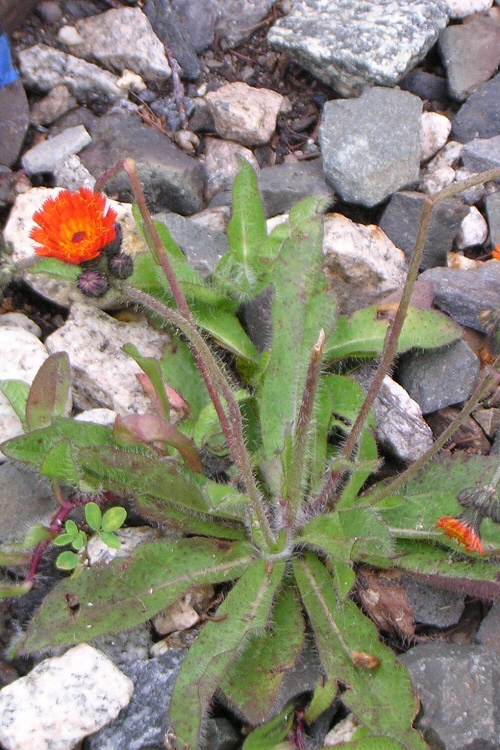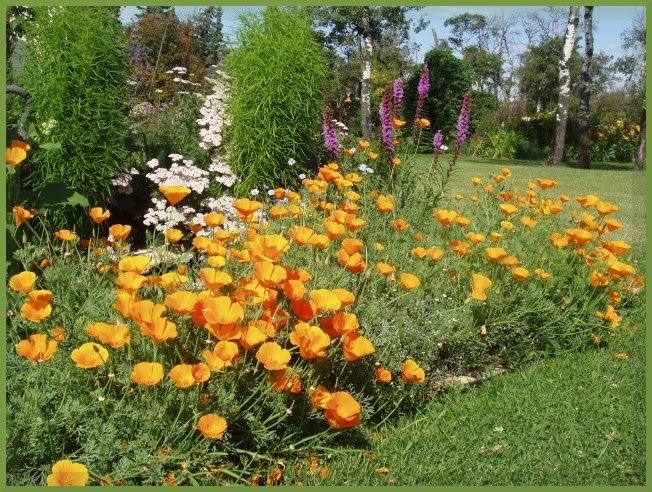Introduced Species: Orange and Meadow Hawkweeds (Hieracium aurantiacum and H. pratense [also listed as H. caespitosum])
Characteristics: Hawkweeds are low-growing plants with shallow fibrous roots and a basal rosette of elliptical to lanceolate leaves 5–20 cm (2-8 in) long and 1–3 cm (.5-1.5 in) broad. The flowering stem is usually leafless or has just one or two small leaves. The stem and leaves are covered with short stiff hairs (called “trichomes”), usually blackish in color. The stems may grow as tall as 60 cm (2 ft), and have up to 40 flower heads, each 1–2½ cm (.5-1 in) in diameter. All parts of the plant exude a milky juice. Orange hawkweed flowers are a vibrant red-orange color; meadow hawkweed’s flowers are bright yellow. Both flower in summer (June-September). Each flower can produce up to 50 tiny seeds. Other common names for hawkweeds include “devil’s paintbrush” and “fox-and-cubs”.
Spread: Hawkweeds spread by seeds, stolons and rhizomes. Their prolific seed output can be dispersed by wind, water, or animal movement. After starting to flower, each plant produces several white-fuzzy stolons that extend 10-30 cm (4 to 12 in) and form a new generation of plants; underground rhizomes may send up new shoots from the root system, as well. Decaying leaves of orange hawkweed produce chemicals that are toxic to other plants, inhibiting seed germination and regeneration of native species. Native to Europe, hawkweeds were introduced in the US as ornamental plants. Hawkweeds thrive in disturbed areas such as roadsides, gravel pits and pastures. They can also invade meadows and forested areas, and are well-adapted to life at higher elevations. They typically grow in sunny areas, though they are somewhat shade-tolerant.
Control: Manually dig up plants in the spring or early summer while the ground is moist; be sure to get the entire root/rhizome system. Cut off and bag any flowers to prevent seeding. Mowing is not effective.
Native Replacement: California poppy (Eshcscholzia californica) is a native perennial with bright, yellow-orange blossoms contrasting with pretty blue-green foliage that would serve as an excellent, low-maintenance replacement for hawkweeds. It can be an…exuberant seeder.


